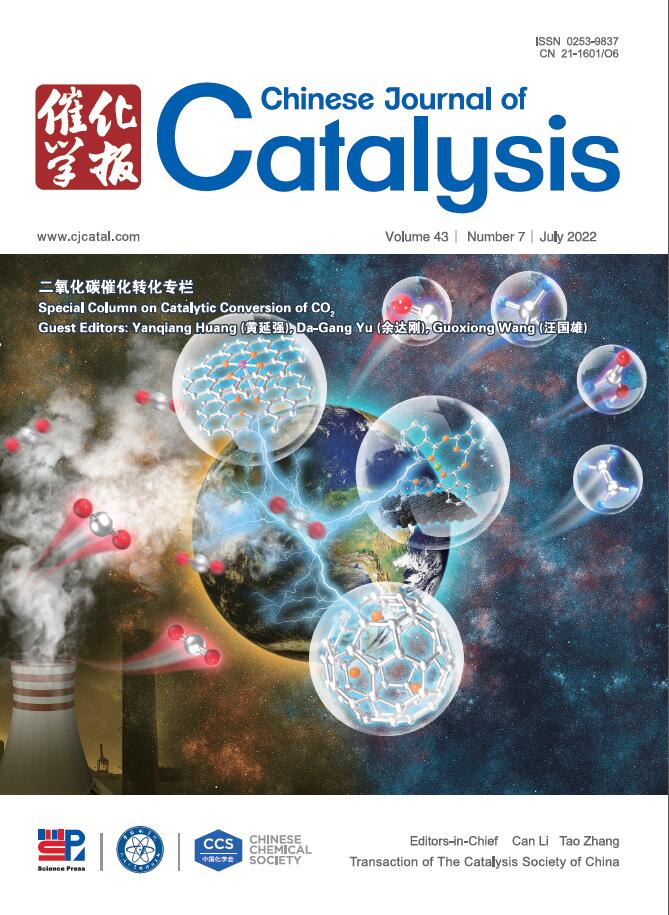Cu-induced interface engineering of NiCu/Ni3N heterostructures for enhanced alkaline hydrogen oxidation reaction
IF 15.7
1区 化学
Q1 CHEMISTRY, APPLIED
引用次数: 0
Abstract
Constructing well-defined interfaces in catalysts is a highly effective method to accelerate reactions with multiple intermediates. In this study, we developed a heterostructure catalyst combining fcc NiCu and hcp Ni3N, aiming at achieving superior performance in alkaline hydrogen electrocatalysis. The NiCu/Ni3N not only overcomes the inadequate hydroxyl binding energy performance of NiCu alloys but also solves the problems of insufficient active sites found in most Ni/Ni3N. Experimental results and density functional theoretical calculations reveal that the formation of heterostructure significantly depends on the amount of Cu. This approach effectively prevents the side effects of increased catalyst particle size, typically resulting from the high temperatures and prolonged reaction times required for conventional synthesis of Ni/Ni3N. The interface of this heterostructure induces a distinctive overlapping effect that enhances the adsorption of water and lowers the energy barrier for the rate-determining step. The NiCu/Ni3N catalyst shows an impressive activity of 71.8 mA mg−1 at an overpotential of 50 mV, a 14.7 times efficiency enhancement compared to pure Ni and comparable to that of low-loaded commercial Pt/C. This research highlights the potential of NiCu/Ni3N in advancing catalyst development.
求助全文
约1分钟内获得全文
求助全文
来源期刊

Chinese Journal of Catalysis
工程技术-工程:化工
CiteScore
25.80
自引率
10.30%
发文量
235
审稿时长
1.2 months
期刊介绍:
The journal covers a broad scope, encompassing new trends in catalysis for applications in energy production, environmental protection, and the preparation of materials, petroleum chemicals, and fine chemicals. It explores the scientific foundation for preparing and activating catalysts of commercial interest, emphasizing representative models.The focus includes spectroscopic methods for structural characterization, especially in situ techniques, as well as new theoretical methods with practical impact in catalysis and catalytic reactions.The journal delves into the relationship between homogeneous and heterogeneous catalysis and includes theoretical studies on the structure and reactivity of catalysts.Additionally, contributions on photocatalysis, biocatalysis, surface science, and catalysis-related chemical kinetics are welcomed.
 求助内容:
求助内容: 应助结果提醒方式:
应助结果提醒方式:


